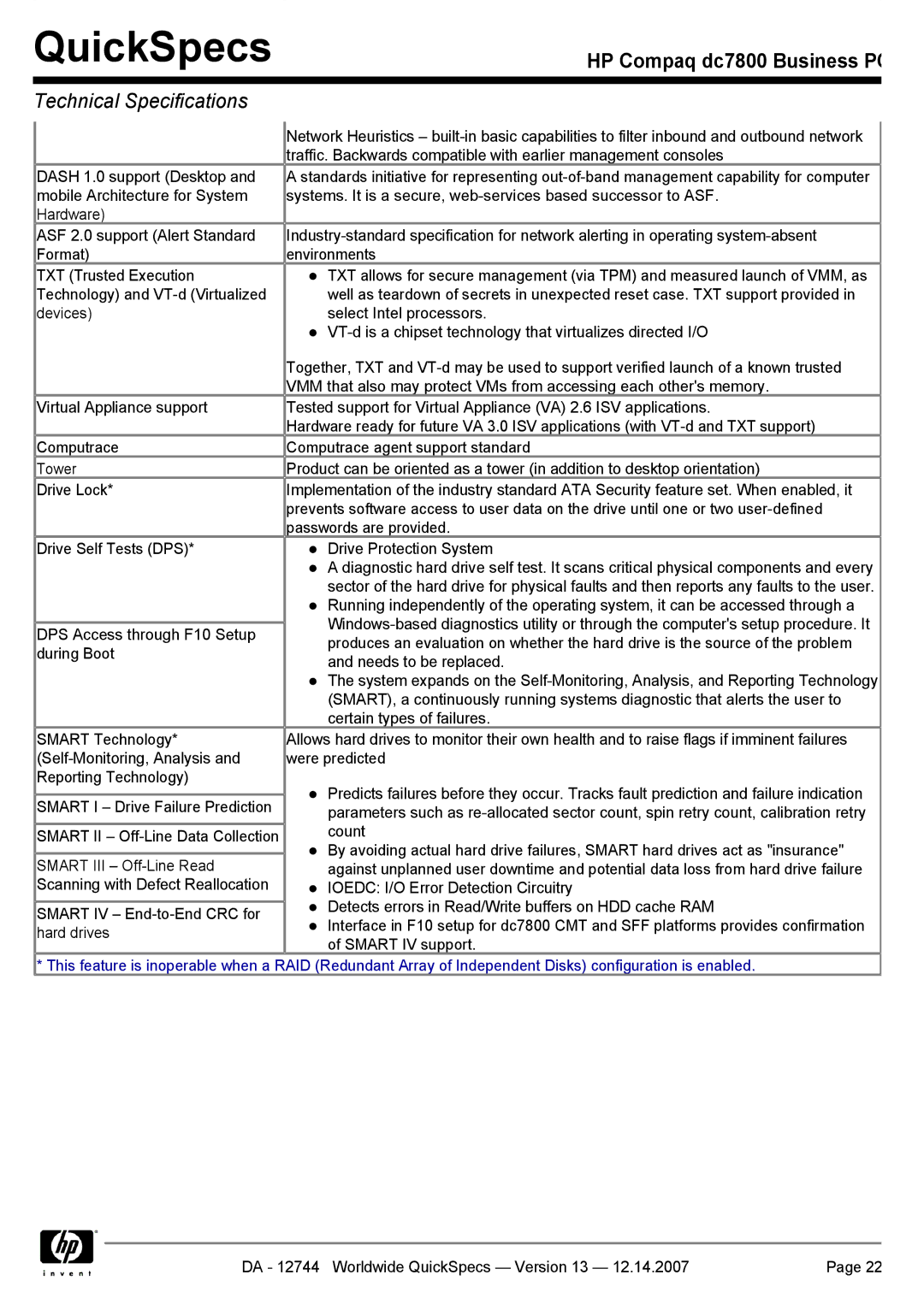
QuickSpecs
HP Compaq dc7800 Business PC
Technical Specifications
| Network Heuristics – | |
| traffic. Backwards compatible with earlier management consoles | |
DASH 1.0 support (Desktop and | A standards initiative for representing | |
mobile Architecture for System | systems. It is a secure, | |
Hardware) |
| |
ASF 2.0 support (Alert Standard | ||
Format) | environments | |
TXT (Trusted Execution | TXT allows for secure management (via TPM) and measured launch of VMM, as | |
Technology) and | well as teardown of secrets in unexpected reset case. TXT support provided in | |
devices) | select Intel processors. | |
| ||
| Together, TXT and | |
| VMM that also may protect VMs from accessing each other's memory. | |
Virtual Appliance support | Tested support for Virtual Appliance (VA) 2.6 ISV applications. | |
| Hardware ready for future VA 3.0 ISV applications (with | |
Computrace | Computrace agent support standard | |
Tower | Product can be oriented as a tower (in addition to desktop orientation) | |
Drive Lock* | Implementation of the industry standard ATA Security feature set. When enabled, it | |
| prevents software access to user data on the drive until one or two | |
| passwords are provided. | |
Drive Self Tests (DPS)* | Drive Protection System | |
| A diagnostic hard drive self test. It scans critical physical components and every | |
| sector of the hard drive for physical faults and then reports any faults to the user. | |
| Running independently of the operating system, it can be accessed through a | |
| ||
DPS Access through F10 Setup | ||
produces an evaluation on whether the hard drive is the source of the problem | ||
during Boot | ||
and needs to be replaced. | ||
| ||
| The system expands on the | |
| (SMART), a continuously running systems diagnostic that alerts the user to | |
| certain types of failures. | |
SMART Technology* | Allows hard drives to monitor their own health and to raise flags if imminent failures | |
were predicted | ||
Reporting Technology) | Predicts failures before they occur. Tracks fault prediction and failure indication | |
| ||
SMART I – Drive Failure Prediction | ||
parameters such as | ||
| ||
SMART II – | count | |
| By avoiding actual hard drive failures, SMART hard drives act as "insurance" | |
SMART III – | ||
against unplanned user downtime and potential data loss from hard drive failure | ||
Scanning with Defect Reallocation | IOEDC: I/O Error Detection Circuitry | |
| Detects errors in Read/Write buffers on HDD cache RAM | |
SMART IV – | ||
Interface in F10 setup for dc7800 CMT and SFF platforms provides confirmation | ||
hard drives | ||
of SMART IV support. | ||
|
* This feature is inoperable when a RAID (Redundant Array of Independent Disks) configuration is enabled.
DA - 12744 Worldwide QuickSpecs — Version 13 — 12.14.2007 | Page 22 |
